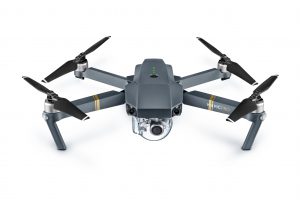Drone producer DJI has revealed a white paper proposing that the 250 g customary for the bottom threat drone class be raised to 2.2 kg.
The FAA’s Drone Registration Task Force – which was introduced with the duty of growing nationwide drone registration guidelines inside a report timeframe – concluded that drones beneath 250 grams (described by the FAA as being approximate in weight to “two sticks of butter”) posed the bottom threat to individuals and have been due to this fact exempt from registration.
Since then, the drone business and researchers have commented that the proof used to find out potential threat was insufficient, primarily based totally on quite a few unproven assumptions; however regulators throughout the globe have been fast to undertake the load restrict as an acceptable threat customary. Now DJI is presenting its case that the load restrict ought to be raised.
“While the FAA’s 2015 Registration Task Force (RTF) said drones weighing up to 250 grams posed the lowest risk, further research shows that standard was based on poorly chosen data and deeply flawed assumptions – including an almost 50-year-old model of casualties from a nuclear war that destroys all hospitals,” says a DJI assertion. “Using more accurate scientific inputs, DJI’s white paper concludes unmanned aircraft systems (UAS) up to 2.2 kilograms can be safely flown with the lowest risk.”
“The RTF had only three days to decide how much a drone should weigh to require registration, and RTF members – including myself – unanimously set a 250-gram limit for registration purposes only, not for safety rulemaking,” mentioned Brendan Schulman, DJI Vice President of Policy and Legal Affairs, who co-authored the white paper with Walter Stockwell, DJI Director of Technical Standards. “Nevertheless, regulators around the world are using the FAA’s 250-gram limit as a safety standard for the lowest-risk drones, despite its flaws. We hope our white paper spurs more detailed evaluation for better and more accurate rulemaking.”
The firm has taken an energetic position in advocating for the drone business with federal regulators, calling with different producers for a micro drone classification for laws and using expertise over regulation to keep up security requirements which will likely be versatile because the business and expertise evolve.
“An early and hurried effort to define such a category in regulation, by the United States Federal Aviation Administration Registration Task Force (“RTF”), has seemingly unintentionally influenced different jurisdictions to comply with go well with in a broader trend with out shut evaluation of the underlying evaluation or assumptions,” says the white paper. “We present that the tactic of estimating the protection of a UAS utilized in preliminary estimates proposed by the RTF reveals that security is dominated nearly solely by elements unrelated to the bodily traits of the UAS, similar to pilot talent and uncovered inhabitants…. A extra life like higher threshold for a lowest-risk mass-based class of UAS is discovered across the 2 kilogram vary.
